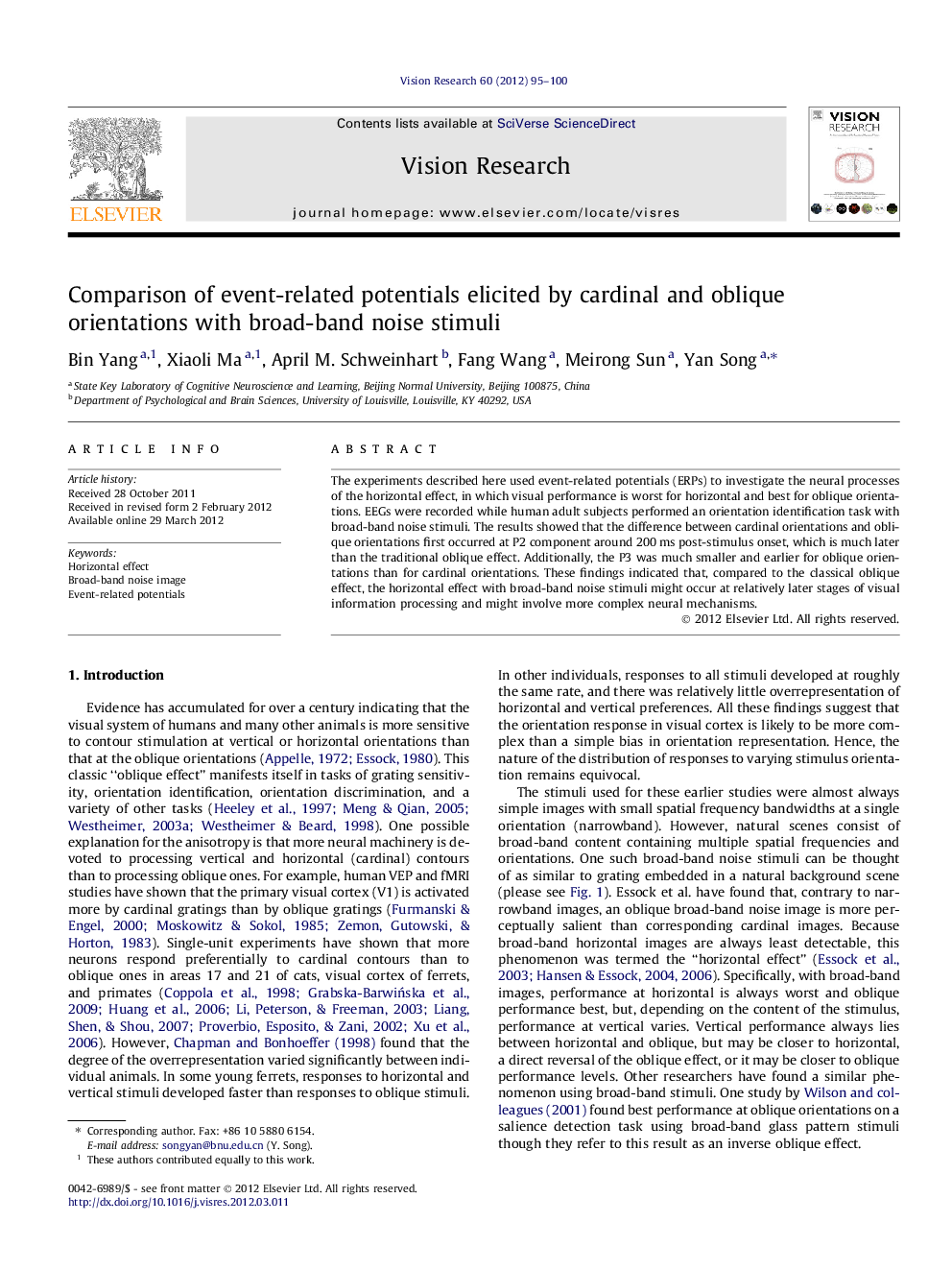| Article ID | Journal | Published Year | Pages | File Type |
|---|---|---|---|---|
| 4033965 | Vision Research | 2012 | 6 Pages |
The experiments described here used event-related potentials (ERPs) to investigate the neural processes of the horizontal effect, in which visual performance is worst for horizontal and best for oblique orientations. EEGs were recorded while human adult subjects performed an orientation identification task with broad-band noise stimuli. The results showed that the difference between cardinal orientations and oblique orientations first occurred at P2 component around 200 ms post-stimulus onset, which is much later than the traditional oblique effect. Additionally, the P3 was much smaller and earlier for oblique orientations than for cardinal orientations. These findings indicated that, compared to the classical oblique effect, the horizontal effect with broad-band noise stimuli might occur at relatively later stages of visual information processing and might involve more complex neural mechanisms.
► We used ERPs to investigate the neural mechanisms of the horizontal effect. ► The P2 was much larger for cardinal orientations than oblique orientations. ► The P3 was much smaller and earlier for oblique orientations. ► The horizontal effect might occur at relatively later stages of visual processing.
